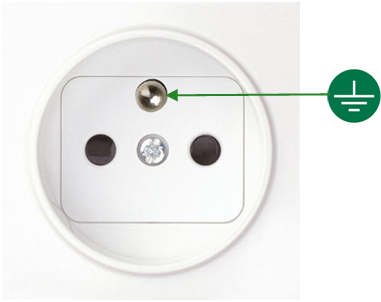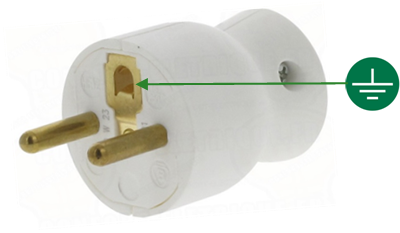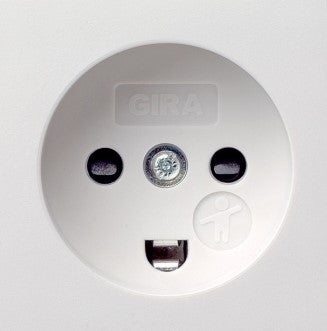Understanding European, Scandinavian and world wide plugs and sockets
Tough Leads manufacture the widest range of heavy duty adaptors in the UK. For everyday household appliances, standard travel adaptors are normally sufficient. However for high power appliances such as tumble driers, power tools and commercial equipment, special heavy duty adaptors are required.
If you would like to use a UK EV granny charger abroad, please see our dedicated EV guide.
If you are planning to visit the UK with a European/Scandinavian EV domestic charger, please see our adaptor range.
Types of Adaptors
We offer a range of adaptors for different applications, all available with a variety of plug options, for use across the world.
Adaptors to use UK Appliances Abroad, or with Imported Items e.g. generators.
Perfect for using higher power items from the across the World when exporting products, on holiday or emigrating.
|
|
|
 |
Heavy duty 4 gang adaptors |
 |
Splashproof heavy duty adaptors Limited to CEE 7/7 universal, and CEE 60309 230v 16A commando. |
 |
Weatherproof heavy duty adaptors |
 |
Camping Commando CEE60309 adaptors |
Adaptors to Enable Appliances with Worldwide Plugs to be Used in the UK e.g. hot tubs and garden heaters
Great to enable visitors to the UK from across the world to use their appliances, or when importing items from the UK.
|
|
Travel adaptors for visitors to the UK |
|
|
Choosing the Correct Adaptor
The IEC provide the definitive guide to which plugs and sockets are used in every country of the World. For Europe and Scandinavia, the map below provides at least a simplistic view:

German Schuko (Type F, CEE 7/3 socket, CEE 7/4 plug)
|
|
|
The most common socket in Europe is the Schuko (Schutzkontakt is German for ‘Protective contact’). The plug has two pins, and along with the socket can be identified by the two metal earth contacts on each side (labelled green in the picture above). The plug is rated at 230v 16A, and has two 4.8mm x 19mm pins.
Unlike UK plugs and sockets, they can be connected either way around, and there is no convention as to whether sockets have the live wired to the left or right receptacle (a receptacle is the hole in a socket which a plug pin fits into). For applications where it is crucial that the live/neutral are connected the correct way, you can easily use our socket tester to show which way the socket is wired (polarity). If it is correct, happy days - if not, simply pull out the plug and turn it 180 degrees.
French (Type E, CEE 7/5 socket, CEE 7/6 plug)
|
|
|
The second most common socket in Europe is the French type, which like the Schuko is rated at 230v 16A, and has two 4.8mm x 19mm pins. Whilst it looks very similar to the Schuko design, there is one major difference. The earth connection is made by an earth pin which protrudes from the socket, and engages with a hole in the plug (there are no side earth strips).
The protruding earth pin means that the plug can only be inserted one way around, just like UK plugs. The major issue is that until 2002, there was no convention as to whether sockets had the live wired to the left or right receptacle. However, it is now more likely that the live will be wired to the right (as you face the socket). This cannot however be relied upon, as many sockets are still wired the other way, and to further confuse matters, the Czech standard still recommends wiring the live to the left!
You therefore have a 50:50 chance of it being wired the correct way and unlike with the Schuko socket, you cannot rotate the plug 180 degrees to solve the issue.
Universal European Plug (CEE 7/7)

In order to bridge the differences between German and French standards, the CEE 7/7 plug was developed. It has a hole to accept the earth pin on a French socket, and side strips to connect to the earth clips on the side of German Schuko sockets. It is often incorrectly referred to as a Schuko plug. All Tough Leads European leads and adaptors use this universal plug.
Italian (Type L)
|
Traditional Italian Socket
New Bipasso Socket
|
10A 16A |
Historically Italy has had its own specific socket, available in 10A and 16A versions. If the plug does not have the rating on, you can determine the type by measuring the distance between the two outer pins. Many sockets (as pictured top) will accept both 10A and 16A plugs. It can be inserted either way around, so reverse polarity can be corrected by turning the plug 180 degrees.
Many buildings now have the Bipasso/Schuko socket, which can be used with both Italian and Schuko plugs. The universal CEE 7/7 European plug will work in Italy where the Bipasso/Schuko socket is available, otherwise a 10A or 16A Italian plug adaptor is required. Both Italian and Schuko plugs can be inserted either way around in the Bipasso/Schuko socket, so reverse polarity can be corrected by turning the plug 180 degrees.
Switzerland (Type J, SN441011)
|
|
10A 16A |
Switzerland and Liechtenstein use their own specific socket, available in 10A (round pins) and 16A (square pins) versions. As the central earth pin is offset, it can only be inserted one way around. There is a convention to wiring the live, so reverse polarity should not be an issue. 10A plugs can be inserted into 16A sockets, but the reverse is not possible.
Denmark (Type K, DS60884-2-D1)
|
|
|
Denmark and Greenland use their own 16A socket. As the central earth pin is offset, it can only be inserted one way around. There is a convention to wiring the live, so reverse polarity should not be an issue.
Whilst the socket looks similar to a Schuko/French socket, they must not be used together. Although they will fit, the earth will not be connected, which is extremely hazardous.
From 2008 French sockets were allowed to be fitted in Denmark, with Schuko sockets supported from 2011. Data on their prevalence is not available and so it is likely that in many places a Danish adaptor will still be required.
Indian Adaptor 5A/6A Round Pin (Type D)
 |

|
The 230v 5A/6A round pin plug is based on the original British BS546 design, which is still used in the UK for table lamps. It is easy to confuse with the larger 15A variant (type M). If in any doubt, measure the distance between the bottom two pins, which will be 19mm.
South African Adaptor (Type M)
 |

|
The 230v 15A/16A round pin plug is based on the original British BS546 design which is still used in the UK for stage lighting. It is easy to confuse with the smaller 5A variant (type D). If in any doubt, measure the distance between the bottom two pins, which will be 25.2mm.
Israel (Type H, SI32)
 |

|
Used exclusively in Israel and the West Bank. Rated at 230v 16A it has three 4.5mm round pins, 19 mm in length. Whilst Schuko and French plugs can sometimes be forced (the pins are 0.3mm too larger in diameter) into this an Israel socket, the earth will not be connected, which is extremely hazardous.
Australia and New Zealand Adaptor (Type I)
 |

|
The 10A version is the most common plug in Australia and New Zealand, with 3 pins in a triangle set at 30 degrees to the vertical. A 2 pin version also used for double insulated appliances and fits in the 3 receptacle socket. Larger appliances may use a larger 15A type, which is not cross-compatible with the 10A socket.
Industrial IEC 60309 (Commando) Connectors
In the 1960s the body now known as the International Electrotechnical Commission (IEC) published a worldwide standard for industrial connectors, which was adopted by the UK in 1968. The standard, which is referred to today as IEC 60309, resulted in widespread standardisation. They are often referred to in the UK as 'Commando connectors' after the MK range.
Each current rating of plug is a different diameter, with the pins keyed to ensure that only compatible plugs will fit a socket. Only 16A and 32A versions are shown below, with connectors also available in 63A and 125A. The standard colour code shows the voltage, with yellow for 100-130v, blue 200-250v and red 380-480v.
Using Sockets Safely Abroad
Why is an earth connection so important?
Many appliances require an earth connection to operate safely. An earth connection ensures that if there is a fault and an external metal part becomes live, the earth wire safely conducts the electricity away, tripping the circuit breaker or blowing the fuse. For example, imagine using a metal power tool. If an earth connection is present, then if there were to be a fault and the metal case of the tool became live, electricity would flow down the earth wire, quickly cutting off the power. If there was no earth connection, the tool would remain live. If you were to touch it, electricity would flow through your body to the ground, with potentially fatal consequences unless an RCD was fitted.
With any metal/class 1 appliance, you must always ensure that the adaptor you use connects the earth pin. It is therefore best to use adaptors with a universal plug connection (an earth hole and metal side strips), as they will work with both French and German types of socket. It is possible to insert a French plug into a German socket, and for a German plug to fit into a French socket- the appliance will work, but there will be no earth connection.
You must also never assume that just because a socket has an earth connection, that it is actually wired to earth. The only way to find out is to use a socket tester (see polarity section).
Some appliances do not require an earth connection. They are known as type 2 and will have a symbol of a square inside a slightly larger square on the appliance label. Other clues (although not 100% reliable), are a plastic case or flat 2 core cable.
Should I worry about polarity?
The UK electrical system is polarised. The earth pin on 13A plugs is at the top, they can only be inserted one way and the live is always wired to the right hole (as you face a socket). As the live is always connected one way, appliances are wired with this in mind. For example, a switch may only turn on/off the live wire. If the appliance is used in Europe and the polarity is reversed (e.g. the live is connected to neutral, and neutral to live) such as would occur when using a Schuko socket which can be inserted either way round, the switch now only turns on/off the neutral. The appliance would appear off, but it is actually still live.
This is particularly important when connecting caravans and motor homes, as they will often have circuit breakers that isolate only the live. If the polarity is reversed and a fault occurs, they will cut off the neutral. This leaves the faulty appliance still live, which could prove fatal, particularly if there was also an earth fault e.g. the metal of a caravan would remain live and electrocute anyone who touched it. Use a polarity reversal adaptor to overcome the issue.
Always use a socket tester to check a socket before using it to ensure that it has the correct polarity, and the earth is connected.

Useful Sources of Information
The IEC provide the definitive guide to which plugs and sockets are used in every country of the World.
The Digital Museum of Plugs and Sockets provides the most comprehensive resource on the internet, particularly for rare connectors.
If you are unable to find the plug or socket that you are looking for, we are always very happy to provide advice.


















